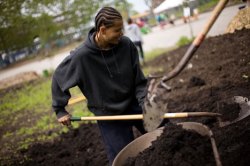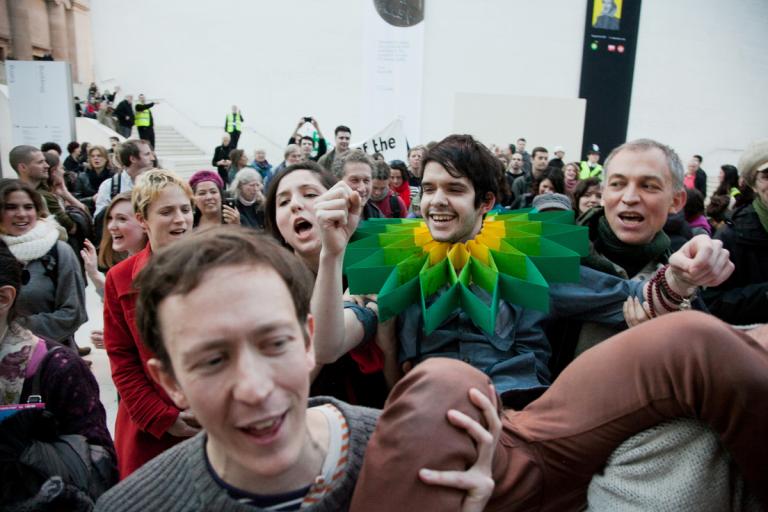
Gita Nanden
It’s one thing to pour money into your shmancy new gazillion-dollar, net-zero eco bungalow. It’s quite another to bring that design — and the underlying philosophy that “green is good” — to the multitudes of urban dwellers who are more familiar with subway schedules than they are with LEED certification or the Home Energy Rating System.
That’s where Gita Nanden comes in. The Brooklyn-based architect and co-founder of Thread Collective wants to take green building beyond the pages of Dwell magazine and into the realm of housing projects and urban farms.
“We don’t want to be the progenitors of gentrification,” says Nanden, whose firm recently completed construction on its new green office building, located in Brooklyn’s transitioning Bushwick neighborhood. Rather, she and her partners want to design eco-friendly buildings and spaces that are as likely to house people on welfare as they are to house upper middle class professionals.
Before we go any further, though, a disclaimer: “We still do high-end design at our firm, and we love that,” says Nanden.
Noted. Also worth noting is Thread Collective’s commitment to working with nonprofits and government agencies to incorporate sustainable design into public places like parks and community centers — all as a way of drawing people into the process of creating a better city. The natural entry point for that goal, says Nanden, is through urban agriculture.
“People love food,” she says. “Whether it’s social networking at a community garden or eating at a farm-to-table dinner, urban farms are a way for people to come together. So the architecture component needs to support that. Public spaces need to help filter urban agriculture into the urban fabric, so the food component isn’t relegated to people’s backyards.”

Added Value
By way of example, Nanden and her partners have designed a 7,000-square-foot Red Hook Center on Sustainability and Culture, a project at Added Value, a 3.5-acre community farm in the Red Hook neighborhood. The center, which will begin to rise next spring, will be blatantly green, with interpretive signs explaining all the eco bells and whistles, which will be exposed for all to see. For instance, the solar systems will not be placed on the roof. Rather, they’ll double as shade canopies. The roof will be built out of shipping palettes.
Added Value farm has long been a community draw in Red Hook, Brooklyn’s poorest neighborhood, where the average annual income is about $20,000. Many of the residents in the nearby housing project avail themselves of the farm’s established job training program — and help grow some of their own food. “The farm is a hub, and it embodies sustainable principles like healthy food and nutrition,” she says. The new center will “act like a self-guided museum; people will learn more about urban agriculture, storm water harvesting, and bio remediation” — cleaning up the dirt and water with the help of microorganisms.
Nanden hopes that the new Center will be a catalyst for similar sustainable building projects throughout New York’s five boroughs. (She and her partners contributed to the research and writing of the recently released Five Boroughs Farm report, a “road map” for New York City’s urban farms.)
But in the meantime, the community has more pressing concerns. Hurricane Sandy hit Red Hook hard, pummeling homes and businesses and cutting power to residents for weeks. The deluge also submerged Added Value farm under three feet of water.
Soil tests indicate there isn’t long-term damage to the growing grounds at Added Value as a result of the hurricane, she says. Still, the farm is in need of serious clean up and operators are soliciting donations and asking for volunteers to help with the work. With a little luck — and a lot of elbow grease — they’ll be ready to put seeds in the ground come spring, when crews plan to break ground on the new community center.



